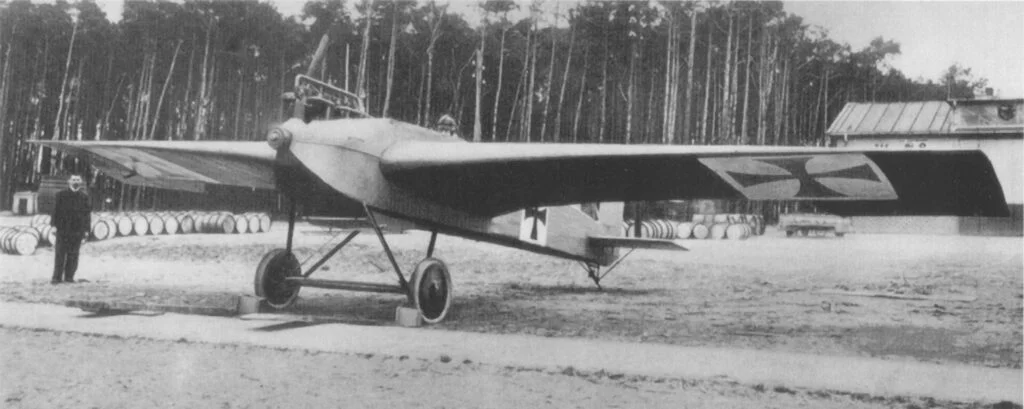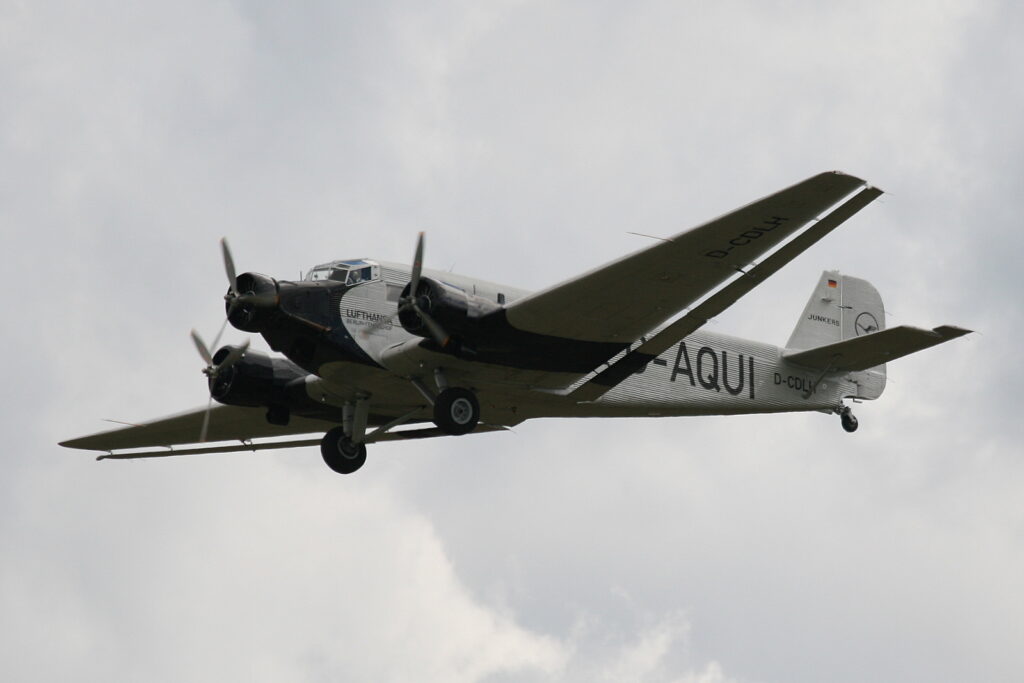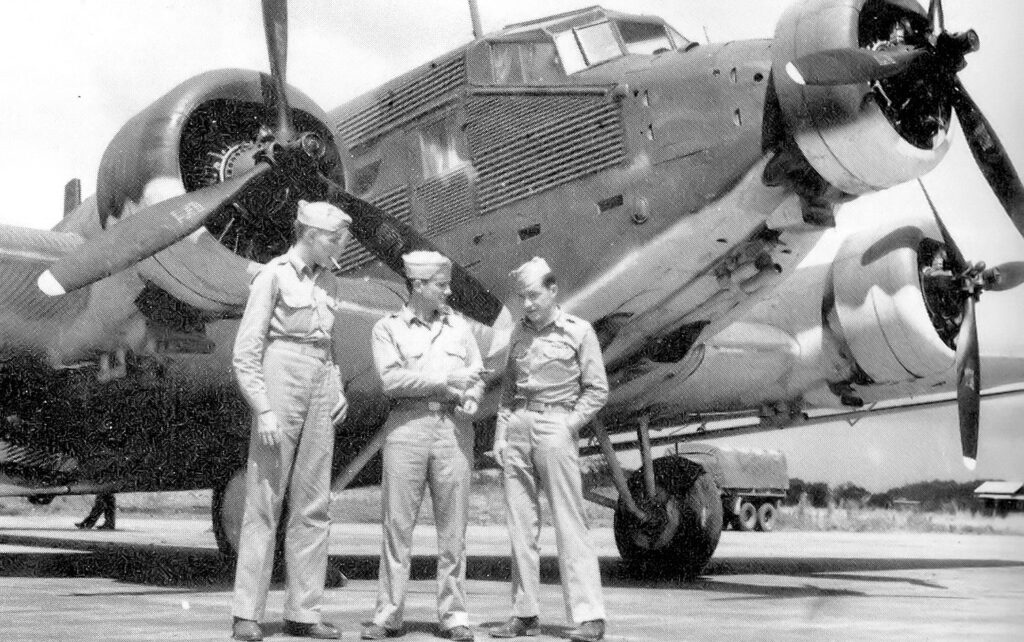
The careers of most early airliners and military transport aircraft are generally short. However, there are a few exceptions notably – the Ju 52. This three-engine aircraft served as an airliner, bomber, minesweeper, casevac and military transport aircraft for a staggering 50 years.
Designed in the late 1920s, the first Ju 52 entered service with the German State Airline Lufthansa in 1930. At that time the front-line fighters of every nation in the world were biplanes armed with light machine guns. By the time the last Ju 52 was finally retired from active service, Mach 2 capable interceptors armed with guided missiles had become the standard.
Throughout this tumultuous change, Iron Annie continued to provide reliable, robust transport worldwide. This is the story of an airliner designed in the 1920s that was still carrying freight and passengers when Concorde took to the air.
 The Junkers Ju 52 has been used in a large variety of roles during her time in service. Photo credit – Bernd KCC BY-SA 4.0.
The Junkers Ju 52 has been used in a large variety of roles during her time in service. Photo credit – Bernd KCC BY-SA 4.0.
Origin
During World War One Hugo Junkers became the pioneer of an entirely new approach to aircraft construction. Most aircraft of the period were biplanes constructed with a wooden structure covered in stretched and doped fabric. The wings on these aircraft required extensive use of bracing wires to keep the wings aligned and straight and combat damage to the bracing wires or flimsy wooden structure could be fatal.
As early as 1910 Junkers & Co applied for a patent for something very different: a cantilever monoplane with a thick wing constructed using a metal structure covered in thin sheets of steel. Compared to externally braced wooden aircraft, this design was much stronger but it wasn’t until 1915 that Junkers was given a contract by the German government to produce an all-metal military monoplane.
The Junkers J.1 first flew in early 1916, and while it was moderately successful, it was also very heavy with a welded steel structure and a covering of thin sheets of steel. It wouldn’t be until 1918 that Junkers was able to produce an effective monoplane fighter by drawing on technology first developed for the construction of Zeppelin airships.
 The Junkers J.1 all metal monoplane in late 1915. It was only 15 years later the Ju 52 was introduced.
The Junkers J.1 all metal monoplane in late 1915. It was only 15 years later the Ju 52 was introduced.
The Junkers D.1 was a low-wing, single-seat monoplane fighter that employed a lightweight steel structure covered in corrugated sheets of duralumin, an aluminium alloy. The use of corrugated duralumin gave great strength and resistance to combat damage and the design of the D.1 was in advance of virtually any other fighter of World War One. However, a shortage of resources meant that fewer than 30 were produced before the war ended.
In the post-war period, Junkers continued to build all-metal monoplanes, mainly transport aircraft and small airliners including the successful W 33 which completed the first east-to-west crossing of the Atlantic Ocean. All Junkers aircraft used the same method of construction pioneered in the D.1, with an aluminium structure covered in a corrugated duralumin skin giving a structure that was both light and immensely strong.
Sometime in 1929, Junkers was approached and asked about the possibility of designing a new transport aircraft capable of carrying a payload of 2 tons over a range of 800 km (500 miles). This was beyond the capacity of any existing transport aircraft of the period and responsibility for the design was passed to Junkers Head of Development, Ernst Zindel.
More…
796
199
265

A Silent Symptom Of TNBC In Females (Take A Look)
More…
75
19
25

Early Signals Of Lung Cancer You Should Know For Sure
More…
277
69
92
 A replica Ju 52 with a single engine mounted in the nose.
A replica Ju 52 with a single engine mounted in the nose.
Ju 52/1m & Ju 52/3m
The design created by Zindel drew heavily on earlier Junkers designs, using the same aluminium structure covered in corrugated duralumin sheets seen on the W 33. However, the new aircraft was a larger, cantilever-wing monoplane with a fixed undercarriage.
The aircraft was provided with a single engine that was intended to be a 1,000hp model, but the unavailability of suitable engines saw the prototype fitted with a 750hp BMW VII water-cooled 12-cylinder engine.
The prototype first flew in October 1930 and, even with the lower-power engine, completed a test flight where it carried a payload of 2 tons over a distance of 1,500 km (930 miles). It proved rugged and easily capable of landing and taking off from rough grass strips and could be configured for both passenger and freight operations.
Relatively few examples of the single-engine Ju 52 were produced before Zindel and his design team at Junkers completed the design of what would become the classic version of this aircraft, the 3m (Drei Motoren – three engines).
 The Ju 52 with its iconic three engines. Photo credit – Rror CC BY-SA 3.0.
The Ju 52 with its iconic three engines. Photo credit – Rror CC BY-SA 3.0.
This new version was first displayed to the public at the Internationaler Alpenflug (Alpine International Air Show) in the summer of 1932. It was powered by three BMW-manufactured Pratt and Whitney Hornet nine-cylinder radial engines and could be fitted with either a fixed undercarriage or two large floats.
The first export sale of the Ju 52/3m was made to the Bolivian airline Lloyd Aereo Boliviano later in 1932. Although these had been intended as passenger aircraft, they were also used as military transports during the Gran Chaco war between Bolivia and Chile from 1932 – 1935. This was the first military use of the Ju 52, but it certainly wouldn’t be the last.
In Service with the Luftwaffe
The first versions of the Ju 52 entered service with the Luftwaffe in 1934 and these were fitted with more powerful BMW 132-A radial engines. Although the intention was to use the Ju 52 as a transport aircraft, the Luftwaffe was awaiting delivery of the first Heinkel III, Dornier 17 and Ju 86 bombers and, as a short term solution, it was decided to convert this aircraft to become a medium bomber.
 The Ju 52 could be armed with a pair of MG 15 machine guns for self defense. Photo credit – Flightsoffancy CC BY-SA 3.0.
The Ju 52 could be armed with a pair of MG 15 machine guns for self defense. Photo credit – Flightsoffancy CC BY-SA 3.0.
Two MG 15 machine guns were provided as defensive armament, with one fitted in a dorsal position on the fuselage top and the other in an ungainly retractable “bucket” beneath the fuselage, behind the undercarriage.
Two small bomb bays allowed up to 3,000 lbs of bombs to be carried. The bomber version of the Ju 52 saw its first operational use with the Condor Legion during the Spanish Civil War (1936-1939). However, its relatively light bomb load and crude bombsight meant that it was rapidly superseded in Spain by dedicated bombers including early versions of the Heinkel 111.
However, as a transport aircraft, the Ju 52 proved exceptionally useful in Spain. At the beginning of the Civil War, a fleet of Ju 52s was used to transport the Nationalist troops of General Franco from Morocco to mainland Spain. In all, almost 9,000 troops plus ammunition, artillery and machine guns were carried by Ju 52s and these all played a key role in the early Nationalist military success.
 The Ju 52 was used in many theatre’s throughout the war.
The Ju 52 was used in many theatre’s throughout the war.
By the time World War Two began in 1939, Ju 52 bombers had been almost completely phased out of service, but the transport version played a critical role in several early war operations. The invasion of Norway and Denmark which began in early April 1940 featured the use of Ju 52s to deploy paratroopers in several vital battles. During the German invasion of Holland, Belgium and France which began in May 1940, Ju 52s were also used extensively to deploy paratroopers in critical areas.
In May 1941, a fleet of almost 300 Ju 52s were used to deploy paratroopers during Operation Merkur, the German invasion of the island of Crete. The operation was a success, but over half of the Ju 52s used were lost.
It was after the German invasion of the Soviet Union in the summer of 1941 that the Ju 52 would prove invaluable. Long supply lines and poor roads made the air transport of supplies and the evacuation of casualties a vital element of the initial invasion, Operation Barbarossa, and subsequent German operations in the east.
 Ju 52s damaged in Crete. Photo credit – Bundesarchiv Bild 101I 166 0512 39 Weixel CC BY-SA 3.0
Ju 52s damaged in Crete. Photo credit – Bundesarchiv Bild 101I 166 0512 39 Weixel CC BY-SA 3.0
Throughout the war in the east, the Ju 52 provided essential supplies to German troops on the ground and the beleaguered German army at Stalingrad. However, losses in Russia were severe as they were in North Africa where the Ju 52 was used to supply the Afrika Korps and German forces in Tunisia in 1943. In all, almost 500 Ju 52s were lost attempting to ferry supplies to German forces in North Africa.
As the main (and sometimes only) transport aircraft available to the Luftwaffe, the Ju 52 provided sterling service on all fronts, but as Germany was pushed back on all fronts, supply lines shortened and this aircraft became less relevant in the final period of the war. Despite this, and with minimal changes, the Ju 52 continued in service with the Luftwaffe until the last days of the war.
A few Ju 52s were even converted for use as minesweepers. The Ju 52/3m MS (Mausi) was fitted with a 45ft diameter aluminium ring surrounding the fuselage. When the aircraft was flown at low level over the sea, a magnetic field generated in this ring would cause magnetic mines below to explode.
 The minesweeper variant of the Ju 52. Photo credit – E.Petzsch – CC BY-SA 4.0.
The minesweeper variant of the Ju 52. Photo credit – E.Petzsch – CC BY-SA 4.0.
These aircraft were used extensively over the River Danube when the RAF began dropping mines to block this important internal transport route. A few of these modified aircraft were retained for use after the war by the British GMSA (German Mine Sweeping Administration).
How Many Ju 52 Are Still Flying?
The Swiss Air Force kept the last Ju 52 in use until the 1980s. Despite 60 years on the field, this aircraft still measured up to the competition. This is because of their ability versatility on the field — as bombers, transports, and minesweeper — and their ability to land and take off on rough terrain. Flugzeugwerke is planning to bring this aircraft model back to life. They planned to enter it into service in 2026.
Post War
The end of World War Two did not mark the end of service for the Ju 52. Spain continued to manufacture the Ju 52 (as the CASA 352) after the war and this aircraft remained in service with the Spanish Air Force until the 1970s. In France, over 400 examples of a versions of the Ju 52, the Amiot AAC.l Toucan, were manufactured and used in Indo-China and North Africa up to the 1960s. The Portuguese Air Force also used Ju 52s in combat operations in Angola in the 1950s and 1960s.
Even British European Airlines (BEA) used several captured Ju 52s as airliners in the immediate post-war period. However, the longest-serving Ju 52s were used by the Swiss Air Force which continued to use three of these aircraft up to the early 1980s.
 A captured Ju 52 in USAAF service in 1942.
A captured Ju 52 in USAAF service in 1942.
Conclusion
Fighters and bombers seem to get the most attention of all types of World War Two aircraft. That’s understandable but the contribution of the Ju 52 to German military operations cannot be underestimated. This aircraft, affectionately known as Iron Annie and Tante Ju (Auntie Ju) by its crews, proved robust, reliable and extremely survivable. It’s the ability to transport paratroopers and to haul large loads of vital supplies reliably over long distances made it an essential element of many German military operations.
A total of over 3,500 Ju 52s were manufactured for use by the Luftwaffe and used on all fronts. More than 500 versions were manufactured post-war in France and Spain. In the period before World War Two, the Ju 52 proved to be one of the most popular and successful airliners in the world. During the war and after it became one of the best available military transport aircraft. Only the Douglas DC-3, with over 12,000 manufactured, can rival the success and longevity of the redoubtable Iron Annie.
Specifications
Crew: Two
Capacity: 17 passengers
Length: 19 m (62 ft)
Wingspan: 29 m (96 ft)
Height: 5.5 m (18.2 ft)
Empty weight: 5,720 kg (12,610 lb)
Max takeoff weight: 10,499 kg (23,146 lb)
Powerplant: 3 × BMW 132A-3 9-cylinder air-cooled radial piston engines, 541 kW (725 hp) each for take-off
Propellers: 2-bladed variable-pitch propeller
Maximum speed: 265.5 km/h (165.0 mph, 143.4 kn) at sea level, 276.8 km/h (172.0 mph; 149.5 kn) at 910 m (3,000 ft)
Range: 998 km (620 mi, 539 nmi)
Service ceiling: 5,900 m (19,360 ft)
Rate of climb: 3.9 m/s (770 ft/min)





